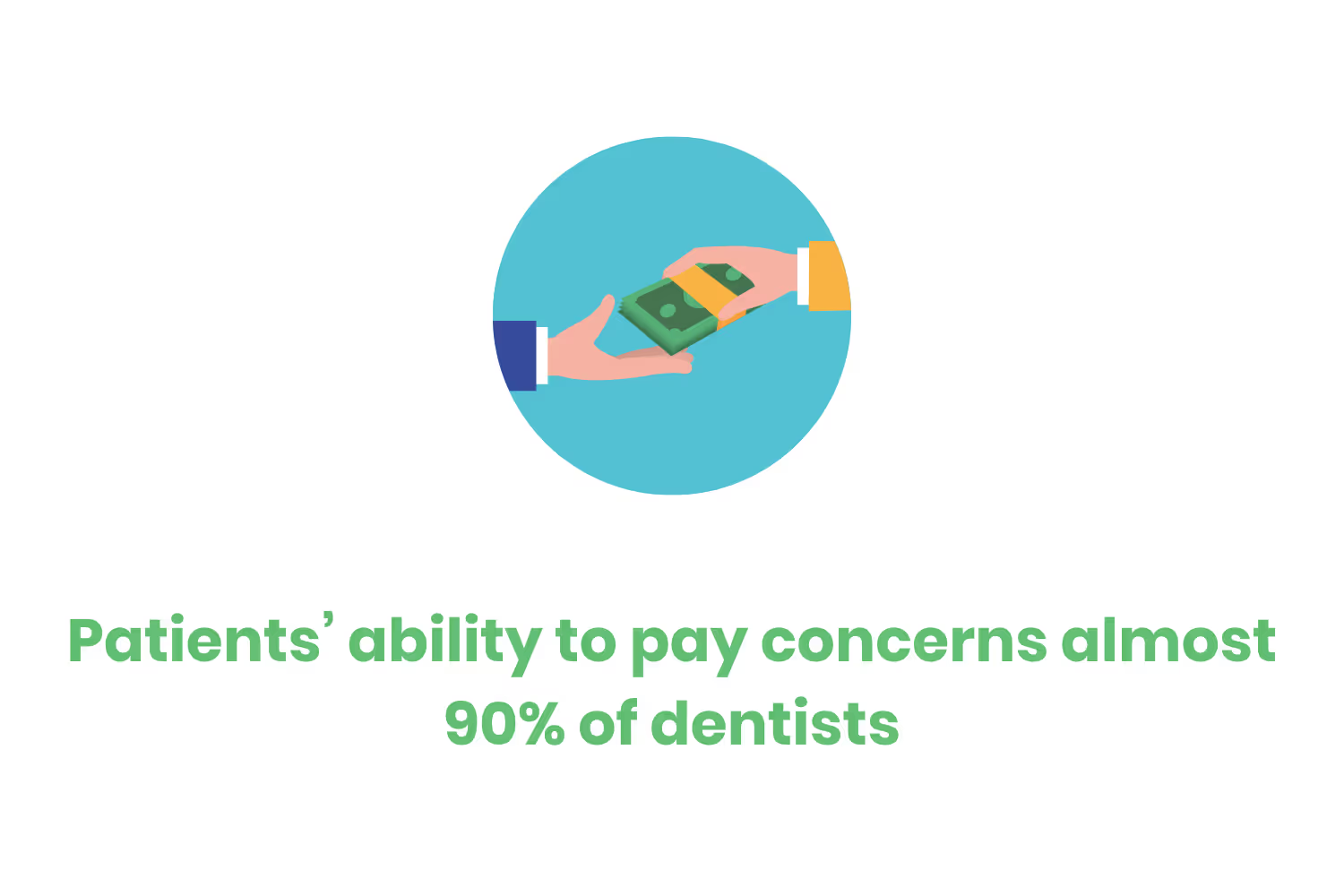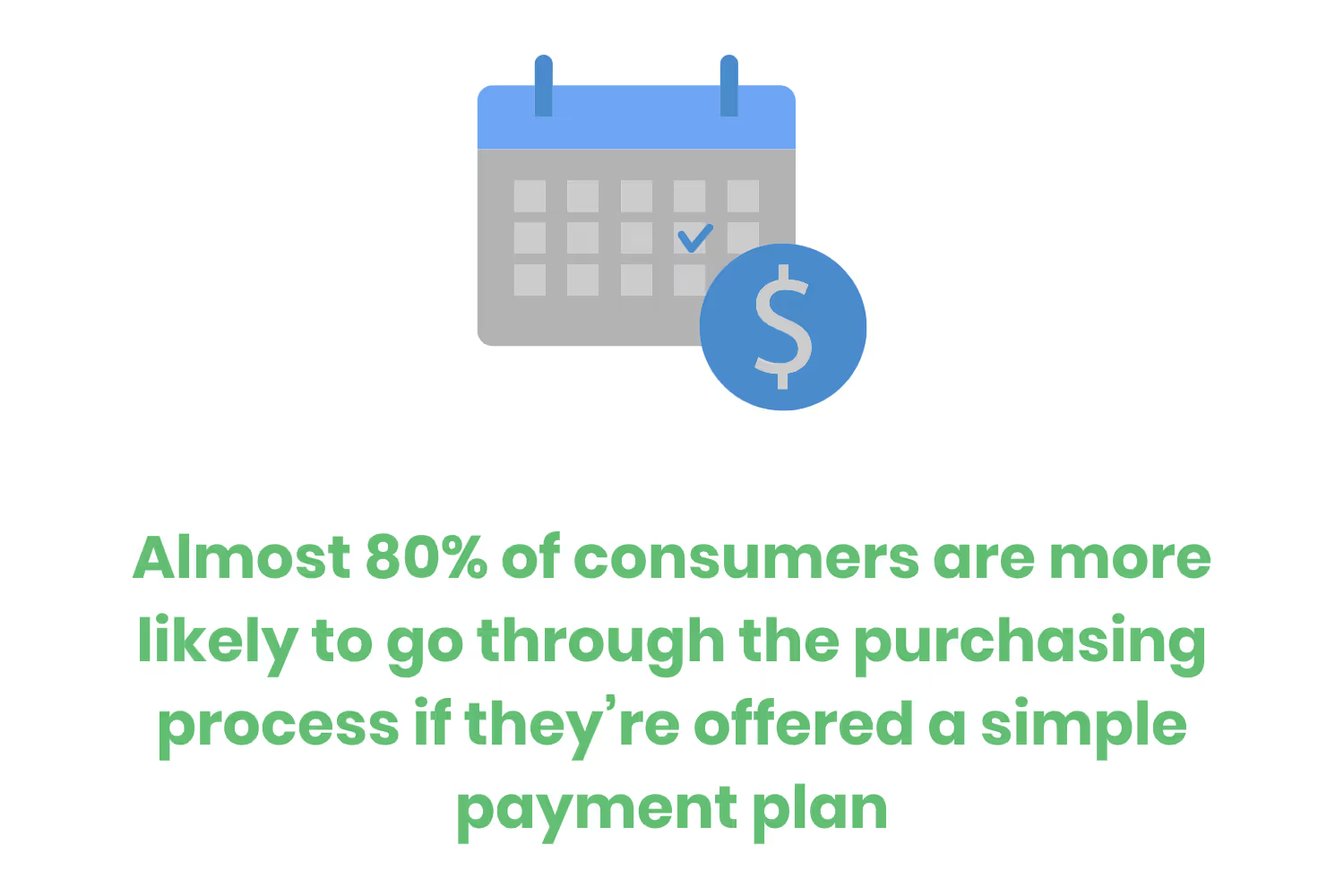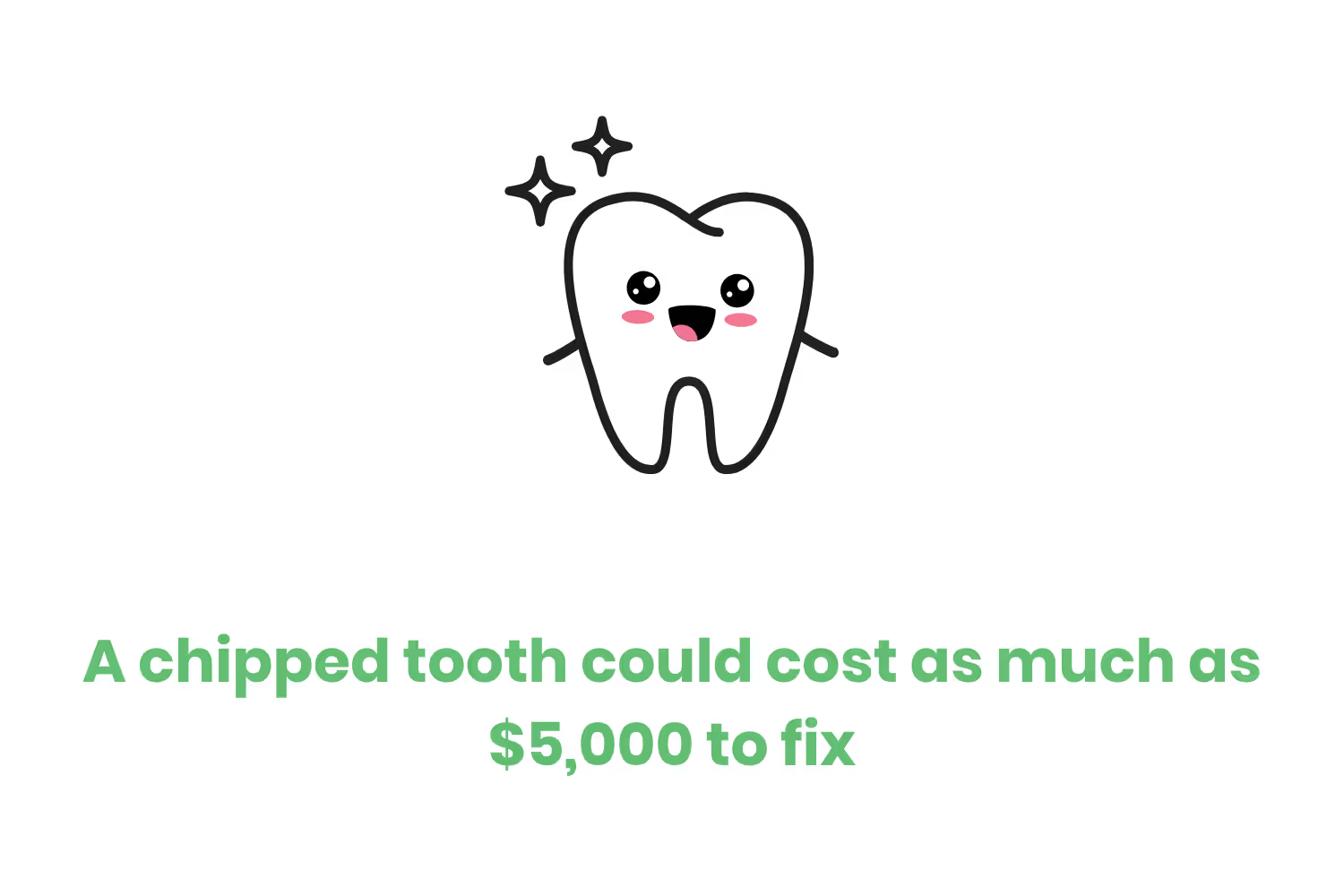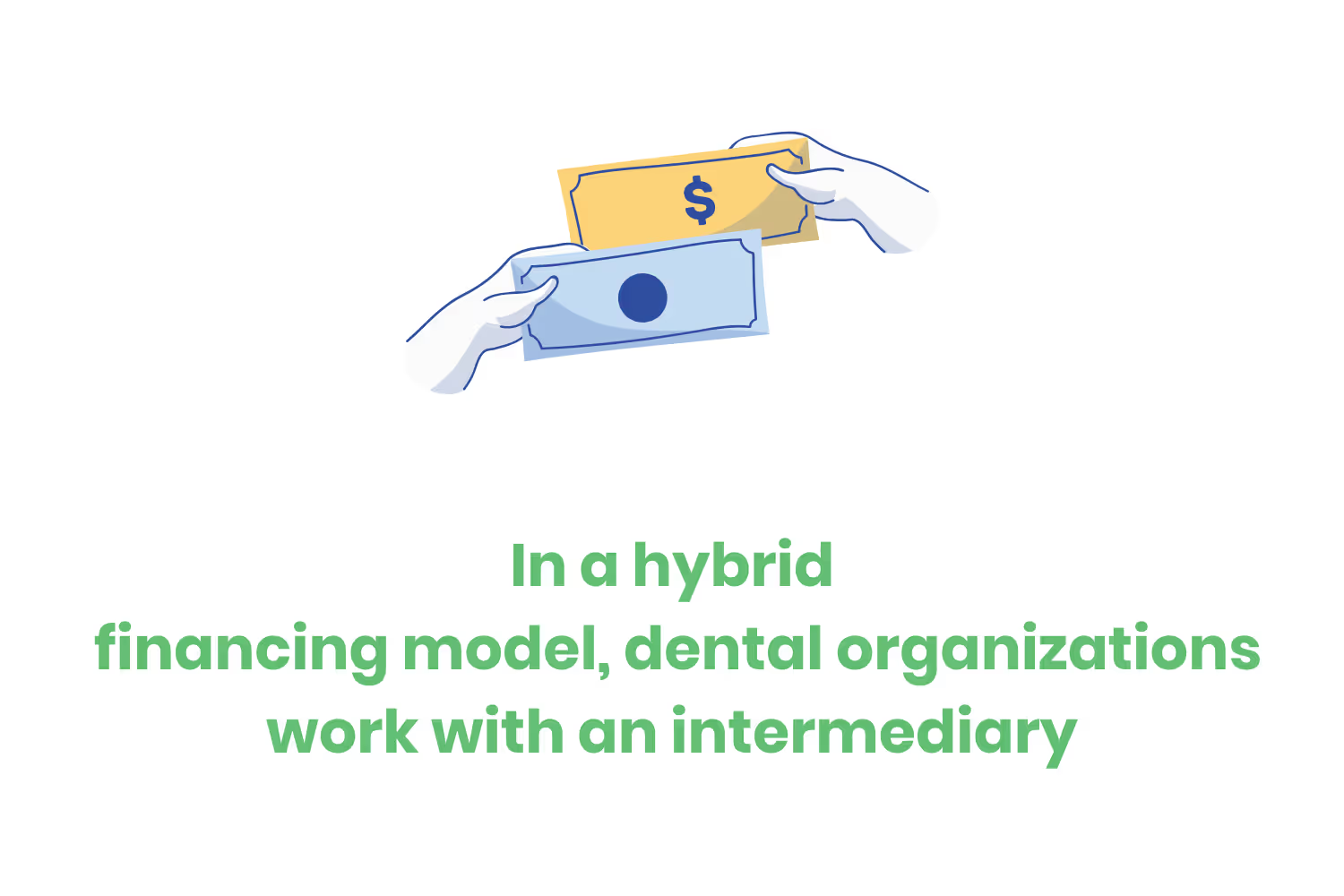The Ultimate Guide to In-House Dental Financing
How do you streamline your patient billing and collection process? In-house dental financing. Here’s our ultimate guide.

Patients’ ability to pay concerns almost 90% of dentists.
What’s worse is the same study that that statistic came from found that the second biggest concern among dentists was practice revenue.
Both of those statistics are concerning.
Being concerned about revenue isn’t anything new, whether you were in the healthcare space or not…it always lands within the top 5 aspects that organization owners think about most. Revenue keeps your lights on.
But, things start to shift a little bit when it comes to the process of boosting revenue between businesses and healthcare practices.
In the business world, CEOs increase their revenue through product development, marketing and sales processes. Businesses exist solely to boost revenue.

In the healthcare (or, in this case, the dental) space, practices don’t exist to appease shareholders. The team of practice managers and partnering dentists likely doesn’t have quarterly meetings to discuss revenue goals. Instead, they meet to figure out ways to boost their patient experience, improve claim submission to payers and increase patient volume.
In other words, dentists establish practices to treat and serve patients. Revenue in this space is the end result.
I know what you’re thinking, “Did this guy just contradict himself? Just a few statements earlier he threw out some statistics about patient payment and now he’s diminishing the importance of revenue within healthcare.”
My goal with what I said wasn’t to diminish the importance of revenue, it was the opposite. There needs to be a slight shift in the mindset of healthcare professionals and dentists alike.
Yes, caring for patients is the ultimate goal…but, it can’t be the only one. Seeing patients without collecting from them is a cost your practice can’t afford. Thus, streamlining your billing and collection processes should become a topic of conversation during those quarterly meetings I mentioned earlier.
But, how do you streamline your patient billing and collection process? In-house dental financing. Here’s our ultimate guide.
Benefits of In-House Dental Financing
The fact that you’re reading this blog post tells me that you’ve already heard a little bit about in-house dental financing.
Although that’s the case, I’m willing to guess that you aren’t 100% sold on the idea yet (another reason why you’re reading this).
Well, the best way to decide whether or not pursuing in-house dental financing is right for your organization will be an easier decision after presenting its benefits.
Dental Organization Benefits
Let’s start with the benefits of in-house dental financing for your organization.
- Streamlined cash flow
- Shortened days sales outstanding
- Reduced accounts receivable
- Decreased bad debt
I’m not just listing out benefits off the top of my head. Let’s look at some statistics to help back up these benefits.
- Almost 90% of providers offer payment plans (InstaMed)
- Over 40% of providers fail to collect over $31,000 per year from their patients (Athena Health)
- Only 20% of providers have their patient’s card-on-file. (Navicure)

Dental Patient Beneefits
There a quite a few benefits associated with offering your patients’ financing options.
- Increased satisfaction
- Streamlined management of out-of-pocket expenses
- More access to needed care
- More affordable dental care
Yes, I do have some statistics to provide for you to act as proof.
- Medical bills surprised almost 90% of patients in 2021. (InstaMed)
- More than 70% of patients would consider switching healthcare providers for a better. (Dermatology Times)
- Over 29% of patients without insurance lived in a household that struggled to pay for medical bills. (CDC)
- The average patient deductible was $4,544 in 2019. (Kaiser Permanente)
In-House Dental Financing Use-Cases
You’re probably wondering what services you should offer financing options for. Do you only offer it solely for emergency surgeries since those are usually the most expensive procedures?
If you’re just starting to establish in-house dental financing, a slow rollout isn’t a bad idea. Only make financing available for certain types of operations. That way you can fine-tune your process for a few months.
Once you’ve got your financing process settled, though, you should provide financing options for every type of appointment and treatment you offer.
The fact of the matter is that almost 80% of consumers are more likely to go through the purchasing process if they’re offered a simple payment plan.

Preventative Care Dental
Let’s face it. Many patients put off routine procedures and appointments. I’m willing to bet that you could list off several patients that come to your office who do this.
As you know, coming in for a 6-month check-up or teeth cleaning helps maintain the overall health of your patient’s smiles. What those patients don’t understand, though, is that regularity helps save them money in the long term.
The preventative care dental appointments you have scheduled would likely be more motivated if there was a payment plan tied to their visit.
Orthodontics and Braces
Over 4 million people wear braces today and a quarter of them are adults. They aren’t cheap. Depending on the severity, braces could cost patients as much as $10,000.
The majority of the cost associated with braces is mostly covered by insurance. However, insurance usually doesn’t cover the entirety of the cost. Braces also lead to subsequent check-up appointments with the patient.

Since both cost and consistency are a requirement for braces, they’re the perfect use-case procedure to provide a payment plan.
You don’t want a lack of insurance or full coverage to deter your patients from obtaining a straight and perfect smile.
Dental Care Emergencies
So far, all of the in-house dental financing use cases that I’ve mentioned have scheduled, subsequent appointments attached to them.
Unfortunately, emergencies aren’t planned occurrences. Chipping a tooth, losing a filling or crown and/or breaking a braces wire can all happen in a flash.
A chipped tooth alone could cost as much as $5,000 to fix.

Since emergencies happen at random, your patients aren’t always financially prepared to handle all of the costs upfront. But, delaying an emergency operation or appointment isn’t an option.
Offering dental payment plans is a perk for your patients so that they can afford the services that you have to give them during an emergency.
Why Consider In-House Dental Financing
44% of patients didn’t seek medical attention because of cost in 2018. That was a few years ago and the cost associated with healthcare hasn’t started to decline.
It’s estimated that patients will spend $18,000 on average on healthcare 2028. That’s 55% higher than the average spent in 2019.
Combining those statistics paints a pretty grim picture. In a healthcare climate like this, no one wins. Both patients and dental professionals suffer.
What’s the solution? Lower prices.
Lowering prices isn’t realistic, it would be nice if you could control what you charge your patients but that’s not the case. How much your patients pay isn’t really up to you because of all of the third parties involved in the billing process.

So, how do you make dental procedures and appointments more affordable? By offering in-house dental financing and payment plans.
More than 90% of patients say that they can either pay their payment plans in full or early by following their plan’s schedule.
If almost 100% of your patients are that confident in paying off what they owe you and all you have to do is give them a schedule, that’s a massive win.
You don’t want to have to send your patients medical collection letters because they don’t pay you. Payment plans practically guarantee that you won’t have to do that.
In-House Dental Financing Options
Of course, there are a few different financing options you can choose to implement at your dental practice.
Which one is the best? There isn't one size fits all. The option that’s the best for your practice might not be for another.
Traditional In-House Financing
Traditional in-house financing is a popular option for dentist organizations. It also happens to be the option that I’ve been inadvertently mentioning throughout this blog post already.
This option occurs when a patient sets up a payment plan with you, the practice. In this model, the patient doesn’t apply for financing.
It’s a popular option among dentists because the practice holds total control over the patient experience. Practice managers get to choose who qualifies, eligible procedures and even establish terms.

An example model of a dentist using the traditional in-house financing model looks something like this. The practice allows the patient to choose a set schedule plan of equal payments over six to 18 months, or offers a discount for an in-full cash payment.
What’s the catch? Well, there is some risk associated with the traditional in-house dental financing model. Since the agreement is between the patient and the practice, the practice holds the risk of future nonpayment.
They’re also usually isn’t interest involved under this approach.
Hybrid In-House Financing
Hybrid is a little bit different from traditional.
First, your patients sign a legal financing agreement and receive interest charges over the course of their plan. Second, there’s an intermediary who administers the program on behalf of the practice.
The intermediary exists to assist with all legal and regulatory compliance involved with the program and interfaces with the patient.
Dentists typically source a hybrid model to save billing time, although you can outsource traditional in-house financing as well. Hybrid models enable practices to combine treatment and financing into one plan and extend credit to their patients.

Of course, like with a traditional model, your practice isn’t paid fully upfront. You receive what’s owed to you in installments. There’s also an opportunity for you to earn interest in patient balances.
This model also allows you to customize your payment plan offering in terms of the eligibility for who and what services.
Although making extra money on what’s owed to you in interest payments sounds enticing, it isn’t the industry standard. In most cases, it’s used for big corporations that sell big-ticket items to consumers, not patients.
How do I get started?
By now, offering in-house dental financing seems like a no-brainer. If I could wave a magic wand for you right now so that you could offer them today, I would.
Unfortunately, it’s not that easy. But, it isn’t necessarily difficult.
Since the traditional in-house financing model is most common, you could technically start offering payment plans to your patients by the end of the day today if you wanted. Draft out your terms, determine your eligibility procedures and patients and be on your way.
The only problem with that is that you’re opening yourself up to operational risk by offering payment plans on your own.
You don’t want to manage the entire process of payment plans for all of your patients on your own. It would turn into a manual nightmare. Not to mention the fact that you could accidentally get yourself into compliance trouble from a HIPAA perspective.
What you need to do is find and evaluate a payment platform provider. But you don’t want just any one-size-fits-all payment platform.
Your dental organization needs a customized payment plan to roll out to your patients to ensure that what you provide is exactly what your patients want. After all, what good is offering payment plans to your patients if they don’t opt into using them?
Etactics has a payment platform that exists to help dentists establish, create and offer customized plans for their patients. Its entire purpose is to make the dentist’s lives easier from a revenue collection standpoint and boost their patient’s satisfaction.
Conclusion
In-house financing is a must-have perk to include as a part of your offering as a dental organization.
Whether you choose the traditional hybrid models, the perks associated with allowing your patients to set up payment plans will change how your practice operates overnight.
You’ll immediately see an increase in your revenue because payment plans are what your patients want.
Yes, it would be nice if you could always receive what’s owed to you in full upfront. But the increasing costs associated with healthcare make that scenario nearly impossible.
In-house dental financing is the modern practice’s way of receiving payment in full, it just takes a little bit more time to get there.
Emphasize your product's unique features or benefits to differentiate it from competitors
In nec dictum adipiscing pharetra enim etiam scelerisque dolor purus ipsum egestas cursus vulputate arcu egestas ut eu sed mollis consectetur mattis pharetra curabitur et maecenas in mattis fames consectetur ipsum quis risus mauris aliquam ornare nisl purus at ipsum nulla accumsan consectetur vestibulum suspendisse aliquam condimentum scelerisque lacinia pellentesque vestibulum condimentum turpis ligula pharetra dictum sapien facilisis sapien at sagittis et cursus congue.
- Pharetra curabitur et maecenas in mattis fames consectetur ipsum quis risus.
- Justo urna nisi auctor consequat consectetur dolor lectus blandit.
- Eget egestas volutpat lacinia vestibulum vitae mattis hendrerit.
- Ornare elit odio tellus orci bibendum dictum id sem congue enim amet diam.
Incorporate statistics or specific numbers to highlight the effectiveness or popularity of your offering
Convallis pellentesque ullamcorper sapien sed tristique fermentum proin amet quam tincidunt feugiat vitae neque quisque odio ut pellentesque ac mauris eget lectus. Pretium arcu turpis lacus sapien sit at eu sapien duis magna nunc nibh nam non ut nibh ultrices ultrices elementum egestas enim nisl sed cursus pellentesque sit dignissim enim euismod sit et convallis sed pelis viverra quam at nisl sit pharetra enim nisl nec vestibulum posuere in volutpat sed blandit neque risus.

Use time-sensitive language to encourage immediate action, such as "Limited Time Offer
Feugiat vitae neque quisque odio ut pellentesque ac mauris eget lectus. Pretium arcu turpis lacus sapien sit at eu sapien duis magna nunc nibh nam non ut nibh ultrices ultrices elementum egestas enim nisl sed cursus pellentesque sit dignissim enim euismod sit et convallis sed pelis viverra quam at nisl sit pharetra enim nisl nec vestibulum posuere in volutpat sed blandit neque risus.
- Pharetra curabitur et maecenas in mattis fames consectetur ipsum quis risus.
- Justo urna nisi auctor consequat consectetur dolor lectus blandit.
- Eget egestas volutpat lacinia vestibulum vitae mattis hendrerit.
- Ornare elit odio tellus orci bibendum dictum id sem congue enim amet diam.
Address customer pain points directly by showing how your product solves their problems
Feugiat vitae neque quisque odio ut pellentesque ac mauris eget lectus. Pretium arcu turpis lacus sapien sit at eu sapien duis magna nunc nibh nam non ut nibh ultrices ultrices elementum egestas enim nisl sed cursus pellentesque sit dignissim enim euismod sit et convallis sed pelis viverra quam at nisl sit pharetra enim nisl nec vestibulum posuere in volutpat sed blandit neque risus.
Vel etiam vel amet aenean eget in habitasse nunc duis tellus sem turpis risus aliquam ac volutpat tellus eu faucibus ullamcorper.
Tailor titles to your ideal customer segment using phrases like "Designed for Busy Professionals
Sed pretium id nibh id sit felis vitae volutpat volutpat adipiscing at sodales neque lectus mi phasellus commodo at elit suspendisse ornare faucibus lectus purus viverra in nec aliquet commodo et sed sed nisi tempor mi pellentesque arcu viverra pretium duis enim vulputate dignissim etiam ultrices vitae neque urna proin nibh diam turpis augue lacus.




